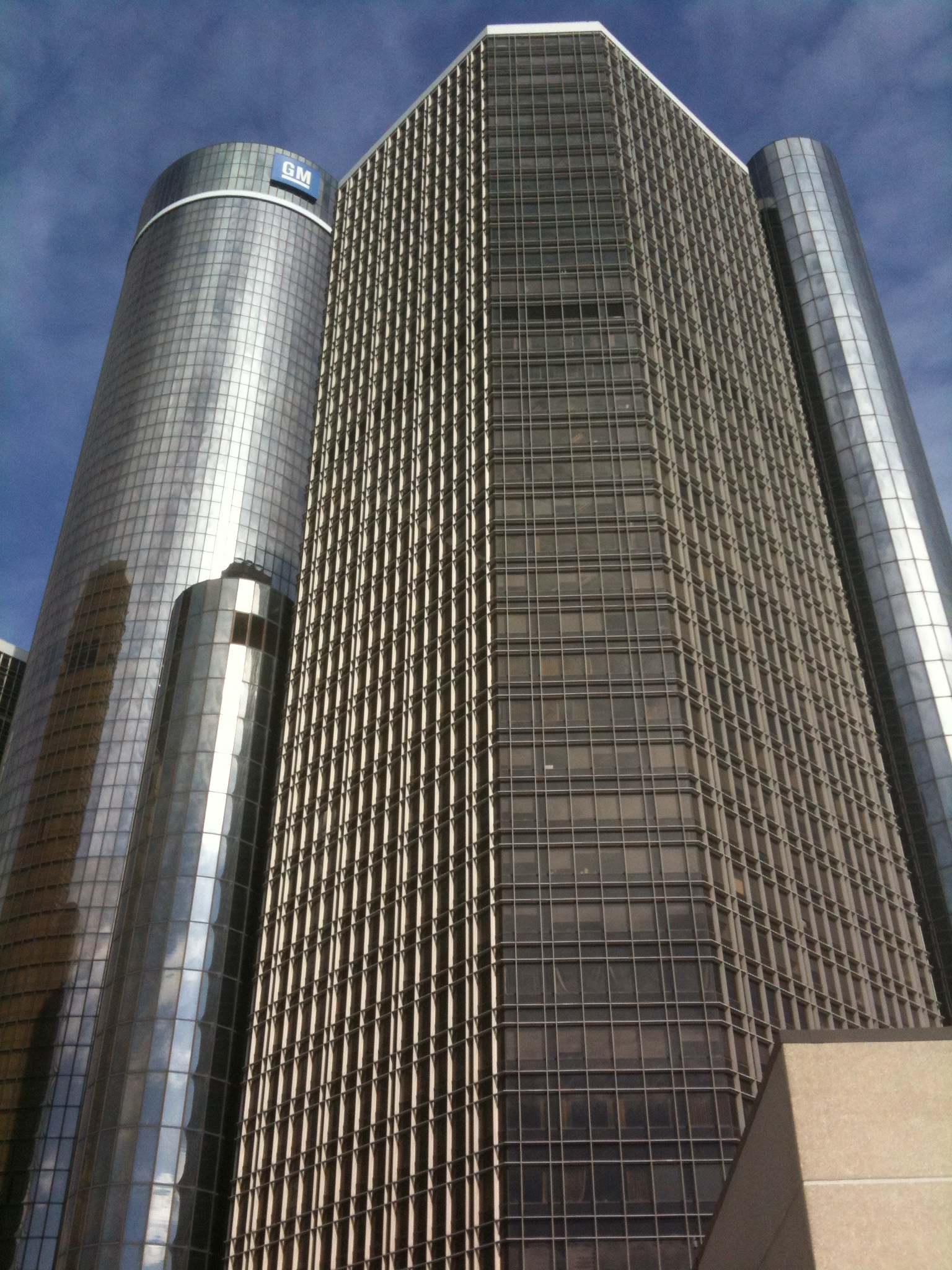 On the day that President Barack Obama signs national health care into law, forever changing how Americans receive health care, Detroit Mayor Dave Bing, delivers his first State of the City Address. The health care debate has polarized a nation as Democrats and Republicans disagreed over what our nation's health care should look like. The City of Detroit and Southeastern Michigan also remain divided. It is up to Mayor Bing to build that bridge that cannot only change the culture within the City of Detroit, but to unify a region to help us all move forward.
I helped draft the last State of the City, delivered by then Detroit Mayor Ken Cockrel. In it, I tried to help heal the wounds of the past that we continue to live as yesterdays controversies remain today's news, while providing a road map for putting the past behind us in order to help us move forward.
On the day that President Barack Obama signs national health care into law, forever changing how Americans receive health care, Detroit Mayor Dave Bing, delivers his first State of the City Address. The health care debate has polarized a nation as Democrats and Republicans disagreed over what our nation's health care should look like. The City of Detroit and Southeastern Michigan also remain divided. It is up to Mayor Bing to build that bridge that cannot only change the culture within the City of Detroit, but to unify a region to help us all move forward.
I helped draft the last State of the City, delivered by then Detroit Mayor Ken Cockrel. In it, I tried to help heal the wounds of the past that we continue to live as yesterdays controversies remain today's news, while providing a road map for putting the past behind us in order to help us move forward.
In moving forward, it is important to focus on our strengths. Manufacturing and trade have always been the center of Detroit’s economy. From furs to steam engines, pharmaceuticals and cars, Detroit has long been the center of commerce -- Yet, Detroit has always been a fractured city. In fact, the reason why the world’s eyes are on Detroit today is because our region sets the mood for the world’s economy and the tone for how companies conduct their business in the future.
The world is watching us and we will not let them down. Today’s economic environment and the new political change that has swept this region, provides us with the hope and opportunity that while we remain true to our manufacturing core, there are opportunities for us to seize and build upon -- This includes the surplus of people who are brilliant with their minds and their hands, such as engineers, line-workers and artists. In addition to our access to our nation's critical infrastructure, such as plants that just need retooling or upgrades, access to the largest fresh water system on the planet, and access to major airports, rail and freeways.
To unify our region and to help Michigan move forward it will take leadership. In recent years, our business, political and community leaders have worked in a vacuum. There are so many people and organizations that have the plans to make positive changes in this region - But no one is working together. It is time to work together and create one strategic plan that we can all work off of. One plan with one set of messages and one master "to do" list of what we need to, to move forward.
Despite these difficult times and differing agendas, we are not without a road map to how we should move forward. Years ago, the French landed on the banks of our city and started to trade fur. Our port quickly became the center of commerce. Our city evolved and quickly became the path for freedom with the Underground Railroad, the Arsenal of Democracy and the Music of Motown. From the moment Cadillac stepped on our shores, the world’s eyes have always been on Detroit.
In 1890 Detroit had 205,876 people living in the city, double from the previous decade. In 1893 our Nation faced economic hardships with the Great Panic of 1893 and our city officials were faced with grand jury investigations into fraudulent contracting and bribery charges connected with various public works projects with a constant stream of indictments against certain alderman. It was the Great Panic of 1893 that basically shuttered Detroit’s industry, which at the time were steam engines. Hazen Pingree was Mayor at the time that went on to become Governor, but it was Mayor Pingree who was elected on a platform of exposing and ending corruption in the city. As Mayor Pingree expanded the public welfare programs, initiated public works for the unemployed, built new schools, parks, and public baths. He gained national recognition through his "potato patch plan," a systematic use of vacant city land for gardens which would produce food for the city's poor.
In 1900 our populations grew to 285,704, in 1910 we numbered 465,766 and in 1920 we passed the million mark. From its very beginning, Detroit has been a manufacturing town. Although industries have come and gone, we have been tied to manufacturing from sawmills, iron furnaces and copper smelting to steel and cars. For years Detroit was at the center of the railway car industry, which paved the way for the automobile. Pharmaceuticals and stoves. As the business leaders of Detroit today it is now our turn to shape Detroit’s future once again.
We are all in this together
We fail as a region when we fail to work together. For example, although Oakland County and the city of Detroit are separate governments, Oakland County’s bond rating is directly tied to Detroit, so we all have a stake in seeing each other succeed. And so we need to invest in each other.
As our local governments see declining revenue from the state, we must support each other and work with them to create public private partnerships and otherwise help identify alternative sources of revenue that will help maintain a certain quality of life. Our region will become a more business friendly region, if business and government work closer together.
Other cities have been down this road before, including San Diego, Miami, New Orleans and others. And each has reemerged stronger. Perhaps a bit leaner but also much stronger, and more efficient. That is what we are working towards.
Collaboration
Given the state of our economy, we need to throw out the playbook and chart new course for leveraging our region’s assets to create new industry, invest in our existing business and creative ways to foster a new generation of entrepreneurs and business. This also may mean that it also is an opportunity to let go of some of our organization, in order to enhance the connectivity between region – pool resources, work together to build and market a regional economy.
We are in a competitive struggle and as businesses continue to fail, the stakes could not be higher. We need to step out of our box as a community and do so as one community.
This year will again be a year of tremendous challenge. Our city and our region will continue to face scrutiny and blame. But the scandals are behind us. That was Detroit then. And this is Detroit now. A city still challenged. Challenged to help its brothers and sisters in the automotive industry. A city challenged by a struggling economy and a city focused on helping its people find hope and opportunity. We as a city are challenged to provide the basic city services that we all expect.
In a city like Detroit there will always be room for improvement. No matter what our future holds, we are ready to face the next challenge and the next opportunity. There is no doubt, however, that the year ahead of us will be one of challenge perhaps even continued uncertainty. And we as a city should be preparing for whatever may come our way.
In 1805 Detroit burned to the ground and Father Gabriel Richard, then pastor of Ste. Anne’s uttered what would become our city’s motto, “We hope for better things; it shall arise again from the ashes” Today, our city again faces a challenge, but with your help, we have the opportunity to rebuild. Just as Judge Augustus Woodward help rebuild our city then, we have an opportunity to do it now.
From the Paris of the Midwest, the City of Churches and Trees, the Motor City, Detroit Rock City, Motown, Hockeytown and the City of Champions. Detroit is our town and it is time to reclaim it as our town. It is time to regroup, rebuild and re-brand this city as a new city and shining example of seizing a challenge and turning it into an opportunity.










